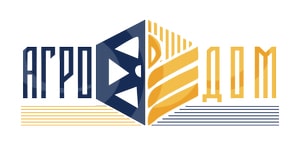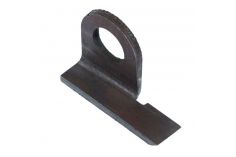
The nature and technique of special methods of welding
In addition to the basic methods of welding, widely used in industry, there are a number of others, have limited application. This cladding with split thermal processes of preparation of the deposited metal and the weld details, welding by high frequency currents, vibroboy, recumbent arc electrode, vacuum arc evaporating electrode, surfacing and thermal spraying using a flexible shnurovym materials.
Surfacing with divided processes of preparation of heat used mainly for surfacing more than low-melting alloy (e.g. copper-based) for steel. Currently, the process is implemented in the form of pouring molten in a crucible of metal deposited on a pre-molded (for the relevant recording of the location of the liquid weld metal) detail of the pre-heated separately in a furnace. To ensure wetting and adhesion of the deposited metal with the workpiece over the surface by heating the part in a furnace to protect from oxidation with a flux. Method is difficult to mechanization, labor-intensive, but provides a good quality of the deposited layer.
Welding by high frequency currents is carried out by melting a filler superimposed on the surface of the mixture of flux and powder hardfacing alloy (for example, granular sormite) through input inductor that provides sufficient heat power. Sormayt is heated to its melting temperature (0C -1150). The thickness of the layer is more than 0.4 mm. the deposition rates are quite high.
Wyprodukowany surfacing perform a vibrating electrode with a diameter of 1.5 ... 2 mm, and as a result of its vibration by mechanical means or by using an electromagnet with a frequency of 30 ... 100 1/s and amplitude of 0.5 to 1 mm, the arc is shorted to a filler product and is excited again. Each short circuit part of the deposited electrode remains on the surface. The thickness of the layer is small. As in the area of surfacing all the time serves the coolant (usually a water solution of soda ash), or the flow of air, the product warms up and deforms very little. Accelerated cooling contributes to the hardness of the deposited metal. Most often this method is used for surfacing of cylindrical articles of small diameter (figure 10). Perform wyprodukowany surfacing and submerged arc.
Arc welding electrode lying or plate carried by the ignition of the arc between the filler unit and the plate, overlaid on a layer of granulated flux with thickness 3 ... 5 mm (figure 11,a). Arc as the melting plate is moved, causing melting and fusing of the corresponding amount of metal on the product. With the correct training process is quite stable. In a similar way the possible surfacing of the internal cavities of parts for forming (figure 11,b).
1 - filler product;
2 nozzle for cooling the product liquid;
3 - nozzle for supplying fluid to the weld area;
4 - electrode wire;
5 - electrodeposit rollers;
6 - electromagnetic vibrator;
7 - spring
Figure 10. Wyprodukowana surfacing
a) diagram of the recumbent surfacing plate electrode:
1 - the supply current; 2 - copper plate; 3 - electrode; 4 - alloying coating; 5 - flux; 6 - product;
b) an example of applying the surfacing of a recumbent electrode to restore the worn lugs of the track:
1 - rod; 2 - coating
Figure 11. Welding recumbent plate electrode
Inert-plasma spraying
IIT is used for high quality application of any powder materials on the surface of products. The process is carried out depending on requirements, the coatings in an open chamber or in a chamber with controlled environment and pressure. The original design of the plasmatron allows to obtain a sufficiently high power of the plasma jet of argon at a relatively low value of the arc current (300 A). It is possible to use gas mixtures based on argon with the addition of nitrogen, hydrogen, helium. Create full profiles of temperature and speed of plasma. Uniform heating and acceleration of the sprayed material. Eliminates the undesirable effect of the chemical interaction of the material with active components of plasma. Provides high-quality coatings, and the stability of the spraying process.
Applications:
Surface hardening of critical parts and components of machines and mechanisms. The application of the easily oxidizable materials. The creation of products from composite materials of almost any composition ratio.
APS
High quality coatings (especially ceramic), the possibility of deposition of almost any metal, the simplicity of the equipment used resulting in no cylinders of compressed gases, low cost sprayed coatings, ease of management.
Spray method VPN coverage not lower, and in some cases higher than coatings obtained by conventional plasma spraying (ESRD) using equipment of known firms.
Applications:
Restoration of worn parts of various machines and mechanisms. Manufacturing of products by method of plasma forming with unique characteristics and parameters.
Supersonic plasma spraying
Plasma spraying heavy-duty coatings for various parts and products is implemented using the method of supersonic spraying. This method is applicable to crankshafts even the largest vehicles (MAZ, KAMAZ, KrAZ), crankshafts of marine diesel engines, ball valves, valves, matrices, press molds, the ridges of the screws and other similar parts.
A supersonic plasma system for the deposition of high-strength coatings includes the power supply APR-404, a chamber for sputtering and a device of moving parts depending on its size and dimensions of the dispenser powder, the supersonic plasma torch and a control panel. not comes.
Coverage implemented by the supersonic method are characterized by maximum data on density and porosity. The best data on durability.
Applications:
Applying heavy-duty coatings on some products, mainly shafts, heavy machinery, ship knees, shafts and other parts spec. destination.
Flame spraying
Flame spraying is used for coating of powder materials (metals, alloys, and some ceramics, plastics) to mobile (on-piste) conditions on various products.
Applications:
The hardening of various machine parts and mechanisms, mainly of anti-corrosion coatings in the conditions of trails and other mobile environments.
The disadvantages of any method of thermal spraying or welding, using for coating powder materials, is the difficulty of ensuring the stability of the properties and an appropriate level of quality of coatings made of mechanical mixtures of multicomponent powders, which is caused by the segregation of components during mixing and transporting the mixture from the metering device into the stream. Segregation leads to non-uniformity of structure formation, the increase of porosity, decrease of strength and deterioration of operational characteristics of coatings.
These drawbacks are deprived of the system of flame spraying, using spray material the rods are made of high temperature sintering or extrusion, powders with a binder. A small length of the bars makes it impossible to perform the coating process continuously, which limits the possibilities of using this method.
The coatings with specified properties, including multi-component from mechanical mixtures of powders of different particle size distribution, achieved using a flexible shnurovym materials (MSRD). They are specifically designed for use in flame spraying, as well as for manual flame surfacing and represent a obtained by extrusion of composite material: corded type, consisting of powder filler and an organic binder, disappearing completely in the coating - binder sublimates in the heating process at a temperature of 400 0C without any deposition on the substrate. The strength and elasticity of the flexible cord allows you to use them in the same way as the wire and apply a coating with flame machines, wire type. The method of flame spraying is economical and simplicity of hardware design and reliability of equipment for coating, allowing it to be used where required to comply with the continuity and stability of the technological process. In the shop the flame spraying process can be mechanized or automated. In addition, the low weight and mobility of handheld devices makes them suitable for machining of large parts and hardware in the field.
The technology of manufacturing flexible shnurovym materials allows to obtain the composition of the cords virtually any combination of different powder materials, differing in granulometric composition. Stable supply: corded material in the high temperature zone of the gas flow along the jet axis, similarly achieved with spray rods and wires, as well as proper selection of the components of the powder mixtures and the particle size of the powders ensures melting of all the components of the powder filler cord, including ceramics. This provides the following benefits compared to traditional methods of thermal spraying and surfacing:
- the increase in utilization of the sprayed material;
- increase of adhesion strength of coating with the base during the deposition (adhesion);
- improving the adhesion of sputtered particles to each other (cohesion);
- the high speed of the sprayed particles in the gas stream allows to apply coatings of low porosity is achieved by using gas-flame powder spraying;
- bobbin winding the flexible cord allows you to automate the operation of spraying.
When using the MSRD is high performance and cost-effectiveness of spraying and surfacing. This fact is confirmed by the increasing worldwide demand for paper materials, especially for materials of oxide ceramics and tungsten carbide.
The technological process of production of parts with coatings obtained by shkurovich materials, includes the operations of pre-washing, degreasing, abrasive-jet machining, flame spraying, fusion coatings (when using flexible shnurovym materials based on tamifluswine of alloys of the system Ni(Co)-Cr-B-Si) and subsequent dimensional processing of parts. The operation of flame spraying can be replaced by operations flame, plasma or electric arc consumable electrode welding. It is possible to use standard industrial equipment.
1 - spray gun; 2 - front coil and remote controller; 3 - control panel; 4 - the block of preparation of air; 5,10,13 - flow controllers, respectively air, oxygen and combustible gas; 6,8,11 - pressure regulators, respectively, of the air, oxygen and combustible gas; 7, 9,12 - pressure compressed air, respectively, oxygen and combustible gas; 14,15 - the fittings of the entrance respectively a combustible gas and oxygen; 16,17,18 - fittings output, respectively, of fuel gas, oxygen and air; 19 - plamegasiteli; 20,21, 22 - hoses fuel gas oxygen and compressed air; 23 - container for combustible gas; 24 - reducer fuel gas; 25 - oxygen tank; 26 - oxygen reducer.
Figure 12. Diagram of apparatus for flame spraying



